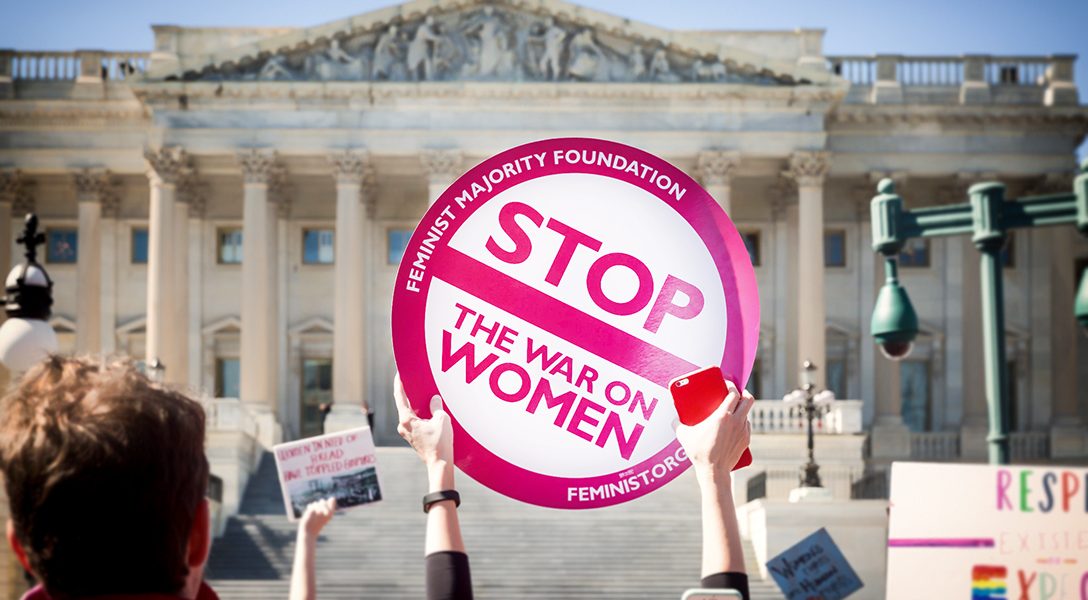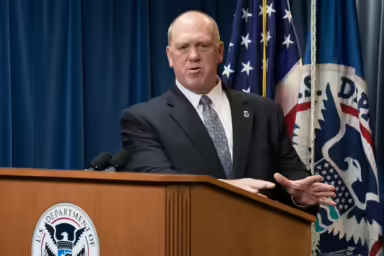Ten years ago tomorrow, Dr. George Tiller was murdered for performing abortions. Now, amid restrictive anti-choice legislation getting passed by a slew of states and demagoguery from the White House on the issue, threats against abortion providers are on the rise again. Is it only a matter of time until another actual human being is killed?
We begin our story with a small collection of quotes that captures the right-wing, evangelical attitude in the US toward women who choose to have abortions, and toward the people who make them possible. The toxic atmosphere created by such words has led to physical violence — and may explain how 25 white Republican men in Alabama could possibly vote to pass an abortion law so draconian it makes no exceptions for rape or incest. In a way, this law is itself a form of violence.
“The Democrat position on abortion is now so extreme that they don’t mind executing babies AFTER birth…” President Donald Trump lying about the democratic position on abortion in a tweet
“The governor stated he would even allow a newborn baby to come out into the world, and wrap the baby, and make the baby comfortable, then talk to the mother and talk to the father, and then execute the baby. Trump misrepresenting Gov. Ralph Northam’s (D-VA) comments regarding late-term abortions “where there may be severe deformities [or] a fetus that’s nonviable.”
“There has to be some form of punishment.” Trump’s response to Chris Matthews asking if he believes in punishment of the woman for abortion.
“Of course it [abortion] should be hard! And the procedure should be painful! And you should allow God to take over!! And you should deliver that baby!” Michigan State Sen. Kim LaSata (R).
“You know how to stop abortion? Require that each one occur with a gun.” Rush Limbaugh
“I will do anything and everything to stop the unmitigated murders of fetuses. I will do anything to stop the atrocities committed by your clinic every minute of every day at your clinic. You are all pieces of [expletive] and I will kill to stop these atrocities. I will blow you up if I have to, burn the clinic down. I will do whatever is necessary. I swear to God I will. After that you are in God’s hands and He will do His thing.” Recorded threat to abortion clinic.
“I will kill every Democrat in the world” so we never more have to have our babies brutally murdered by you absolute terrorists.” Matthew Haviland, a Trump supporter arrested and accused of threatening to rape and murder a professor who supports abortion rights.
How is the pro-life side ever guilty of something that equates to violence? Sen. Ben Sasse, (R-NE).
Ten years ago tomorrow, Dr. George Tiller, one of the few doctors in the US at the time who provided late-term abortions, was shot in the head and killed by Scott Roeder while standing in the foyer of his church. Now, with several states passing strict anti-choice laws and President Donald Trump heating up the rhetoric, threats against abortion providers are once again on the rise.
During his trial, Roeder freely admitted to killing Dr. Tiller, explaining that he felt justified doing so in order “to protect unborn babies.”
In court, Roeder told the jury that he became a born-again Christian in 1992, after having watched an evangelical TV show called The 700 Club, and admitted to having thought about killing Tiller as early as 1993. In 2009, Roeder was sentenced to life in prison with no possibility of parole for 50 years, but his sentence was reduced in 2016.
Though abortion protests originally started peacefully, anti-abortion extremists began using deadly violence against abortion providers about 30 years ago to spread their message. Clinics have been bombed; workers have been injured, kidnapped, threatened, and murdered.
The National Abortion Federation reports that, since 1993, there have been 11 murders and 26 attempted murders due to anti-abortion violence, including one instance where a doctor was shot through the window of his house and killed while standing in the kitchen with his family.
In fact, when Dr. Tiller was murdered, it was the second time he had been shot. Anti-abortion activist Rachelle “Shelley” Shannon, who also firebombed abortion clinics in three states, had previously shot and wounded the doctor in 1993. She compared “abortion providers to Hitler” and said that “justifiable force” was needed to stop abortions, according to the New York Times. Shannon received 11 years in prison for the shooting, and another 20 for the arson. She was released from prison this year.
The last deadly attack against abortion providers was in 2015, when an attacker entered a Planned Parenthood in Colorado Springs and killed three people. Nine others were injured. But the lack of killings in the last couple of years does not mean a lack of violence; in fact, severe violence has recently been on the rise.
According to a survey of 218 clinics conducted by the nonprofit organization Feminist Majority Foundation, over half of the clinic doctors and staff members responding reported experiencing targeted threats and intimidation in 2018. These threats included stalking, harassing phone calls and emails, and tracking of activities.
Staff at multiple clinics told WhoWhatWhy that, over the past year, protesters posed as patients, tried to get inside their clinics, scaled security walls and fences, blocked access to clinic doors, and utilized illegal amplified sound to make sure their messages were heard. Bullets have been left on office desks, and incendiary messages about the work of abortion doctors have been spread on social media.
Protesters outside Choices Women’s Medical Center in New York are not just louder now but “there’s a level of viciousness,” said staff member Marylou Greenberg, who added that protesters go after patients with verbal insults and “do as much as they can get away with.”
In April one Pennsylvania clinic filed a lawsuit against three protesters because of threatening behavior. The Allentown Women’s Center suit accuses the defendants of “pepper-spraying a patient in the face, obstructing the entrance to the facility’s parking lot, and hitting a clinic escort in the head.”
Kim Chiz, the executive director at Allentown Women’s Center said, along with the violence addressed in the lawsuit, her staff has to endure an endless barrage of anti-LGBTQ comments, body shaming, and nonstop verbal harassment. The patients frequently come into the clinic very upset after facing the protesters, and the clinic has received a lot of “angry, emotional feedback” from patients.
This is commonplace. Kwajelyn J. Jackson, executive director of Feminist Women’s Health Center in Atlanta, said that many of the verbal assaults at her clinic were racial.
Jackson explained that most of the patients, staff members, and leaders in her clinic are people of color. Meanwhile, the majority of protesters are usually older white men and women, and a lot of the language used by the protesters is racial, such as “Don’t you believe black lives matter?” and “Why are you contributing to the genocide of your people?”
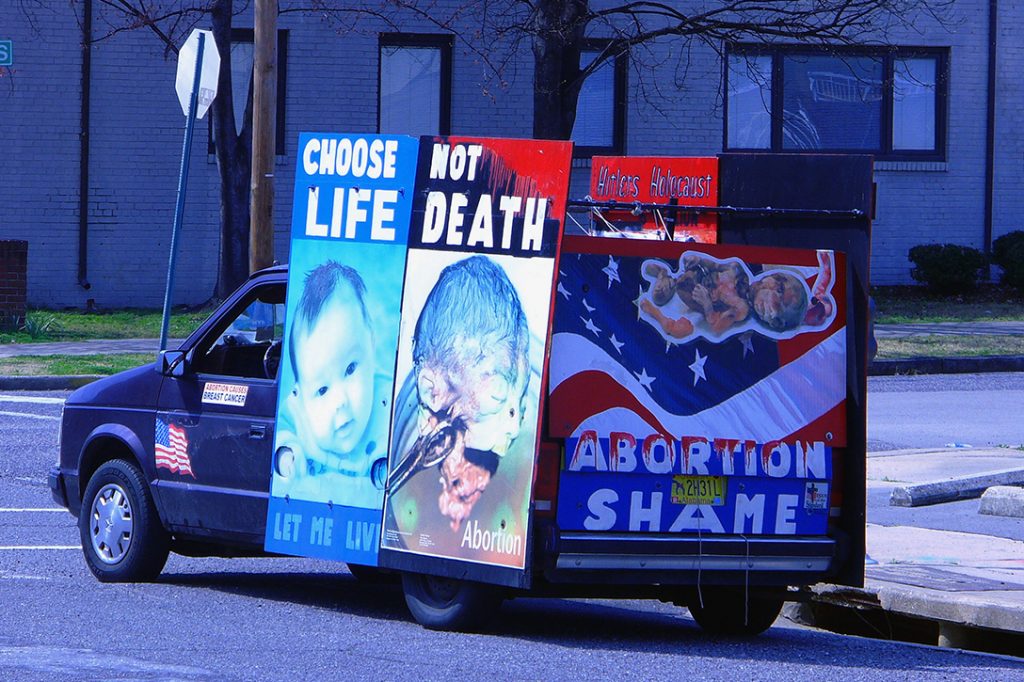
These attacks beg the question of the ultimate goal of anti-abortion protesters. Data shows that making abortion illegal does not stop abortions, it just makes them less safe.
Meanwhile, amid the spate of restrictive new laws being passed, no state politicians have addressed supporting mothers and their children by helping with education, food, or housing — even though many of the states with the highest number of abortion restrictions also have the worst health outcomes for women and children.
Studies show that children of “women denied abortions are less likely to hit their developmental milestones.”
Abortion restrictions also disproportionately affect poor women and women of color. The risk of pregnancy-related death for black women in the United States is three to four times higher than it is for white women. For example, Georgia, which has the fourth-largest population of African Americans in the nation, also has one of the highest maternal-mortality rates in the country.
“Race, poverty, and geography intersect down here,” a Georgia provider told the New Yorker. “Minority pregnant women are usually poor, and it’s difficult for them to get to prenatal care, which is 60 miles away.”
Exploiting the Christian Right
It hasn’t always been this way. There was a time when more Republicans than Democrats supported abortion decriminalization (out of concern for individual freedom). In the summer before Roe v. Wade — the 1973 Supreme Court decision that made most abortions legal by deeming them a constitutional right protected by the privacy rights guaranteed in the Fourteenth Amendment — a Gallup poll reported that 64 percent of all Americans (and 56 percent of Catholics) agreed that “the decision to have an abortion should be made solely by a woman and her physician.”
The final opinion in Roe was written and supported by Supreme Court justices who had been appointed by a Republican president.
So how did we get to the point where an anti-choice law is passed that makes no exceptions for rape or incest?
Over time, a group of “conservative thinkers” saw abortion as a way to bring evangelicals into the electorate — and as an issue that would divide Democrats — and sold the idea to Ronald Reagan, who embraced it.
In the 1980s, abortion became a big political issue. Reagan began framing abortion in “terms of rights of the unborn,” echoing the Roman Catholic idea that life starts at conception.
Making Pro-Life Mean Pro-Trump
Fast-forward to 2016, when Donald Trump began using graphic and visceral language to speak against abortion, becoming the first Republican nominee to promise he would appoint anti-abortion justices to the Supreme Court — appointees he said would overturn Roe “automatically.”
This was a switch for Trump, who for most of his life supported abortion rights. He has used abortion to “solidify his support among evangelical voters initially skeptical of him,” writes the Washington Post.
Richard Land, a prominent evangelical Christian leader, told the New York Times that Trump and the evangelicals have a “transactional” relationship, and said the president has given evangelicals a “place at the table and a welcome at the White House.”
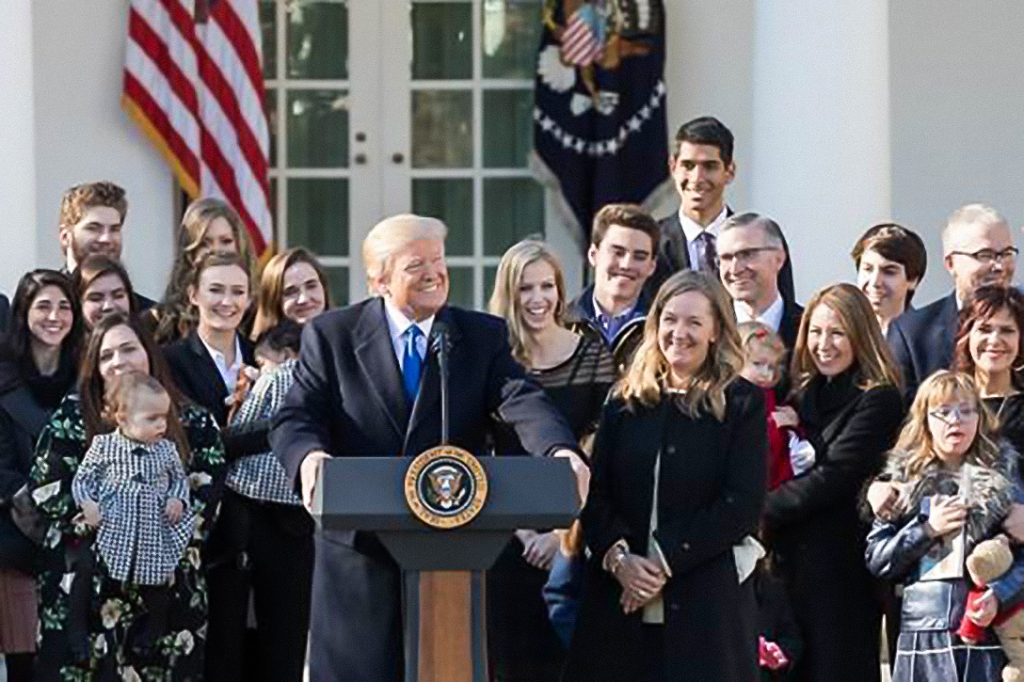
Since his election, abortion has remained a common topic for Trump. In March, his administration announced that it would give as much as $5.1 million in family planning funds to the Obria Group, an organization connected to the Catholic Church that aims to take patients and funding away from Planned Parenthood.
Under Trump, the Department of Health and Human Services has also made it increasingly difficult for clinics that offer abortions to easily qualify for Title X funds, which subsidize reproductive health care for four million low-income patients. The objective is to withhold these funds from health facilities that additionally offer abortions.
As Trump’s run for reelection approaches, he has begun to emphasize the issue at his rallies and during political speeches.
“It’s not just anti-abortion rhetoric, it’s also using terminology that is inflammatory and false to describe reproductive healthcare providers and the medical procedures they provide,” said duVergne Gaines of the Feminist Majority Foundation. “All of that I think is enormously irresponsible and has placed providers in jeopardy.”
Examples of this include Trump’s inaccurate statement that Democrats support policies that allow doctors to “rip the baby out of the womb and kill the baby.” His administration has also followed suit: Vice President Mike Pence surprised thousands of protesters by making an unannounced appearance at January’s March for Life, an annual rally protesting abortion. Pence also has praised Unplanned, an anti-abortion film released in April that has been exposed for taking “liberties with reality.”
What Comes Next?
Two weeks ago in Alabama, Gov. Kay Ivey (R) signed into law one of the nation’s most restrictive bans on abortion, even excluding exceptions for rape or incest, and making it a felony for physicians to perform the procedure. The penalty for doing so could be up to 99 years in prison.
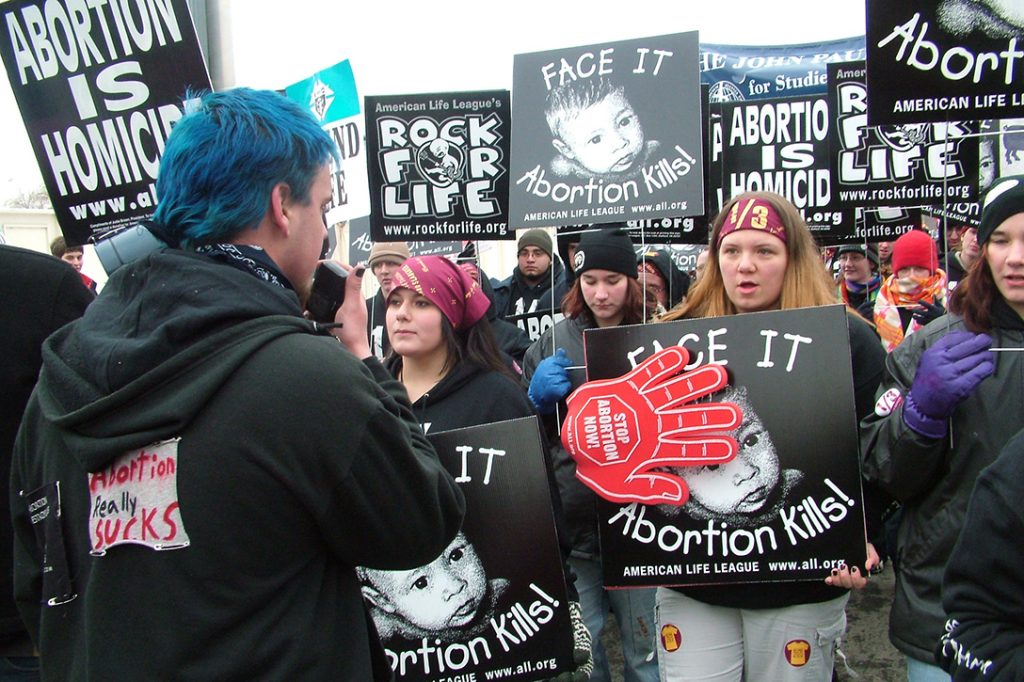
Laws such as this inflame anti-abortion activists by legitimizing, in their minds, claims that abortion from as early as conception is murder — and there is grave anticipation that these new moves by Republican legislators will incite even more violence.
In neighboring Georgia, Gov. Brian Kemp (R) signed a so-called heartbeat bill outlawing abortion after six weeks (when a fetal heartbeat can be heard with a stethoscope or a Doppler fetal monitor). Opponents of such bills point out that the sixth week is when most people first learn they are pregnant.
But the Georgia bill also takes it one step further. It declares that anyone who chooses to have an abortion is committing murder, and the penalty can be anywhere from life imprisonment to the death penalty.
Women who miscarry because of their own actions — or something deemed their own actions by a prosecutor — could face up to 30 years in prison. The New York Times writes that these laws show some activists are “unapologetic about pressuring prosecutors to treat miscarriage as murder, if it serves the cause of ending abortion.”
This sometimes means that they punish grieving women who actually wanted children and had “no intention of aborting their fetuses” — but this is a “societal price they appear willing to accept.”
The laws also do not provide pathways to reducing accidental pregnancies, such as teaching comprehensive sex education or providing access to birth control. Many states that passed restrictive abortion laws require that sex education “stress” abstinence.
Georgia mandates sex education but does not require that information about contraception be included. Neither Alabama nor Missouri mandate sex education, and when it is taught, both states “require that it emphasize the importance of ‘sex only within marriage.’”
Since the beginning of 2019, more than 300 pieces of legislation that aim to restrict or ban access to abortion care have been introduced.
The “heartbeat” bills that have been passed around the country have all either been challenged or will be challenged soon. The Alabama law has not taken effect, and now has been challenged by the ACLU.
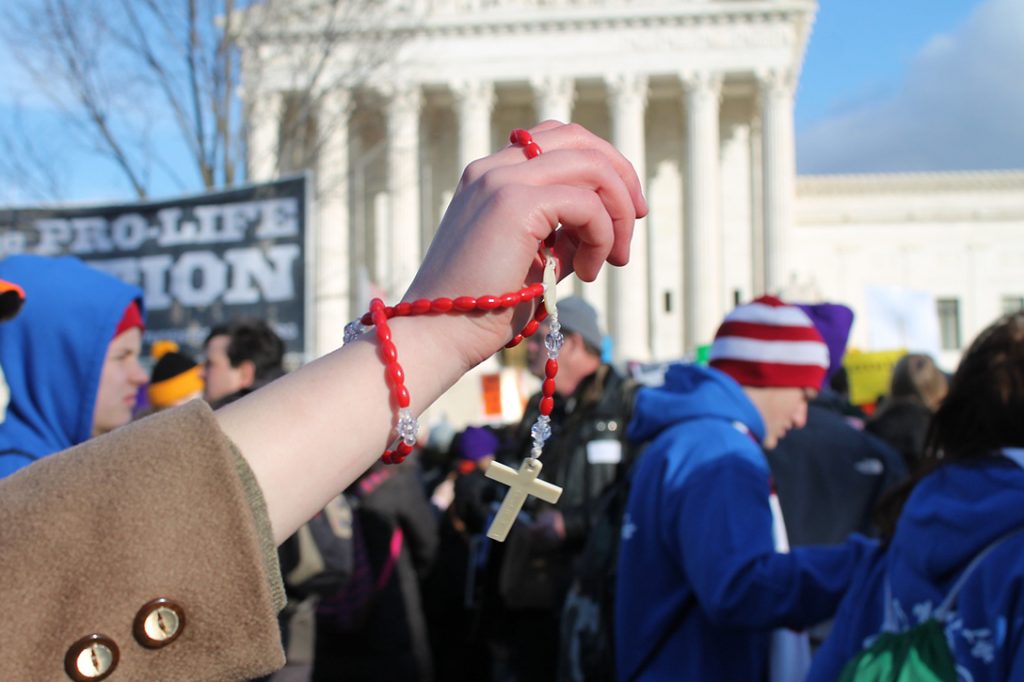
The goal of the majority of these laws is to get a hearing at the Supreme Court, which — with Trump’s appointment of Brett Kavanaugh and Neil Gorsuch — is more conservative-leaning than it has been in decades. However, it is unclear whether the Supreme Court will hear any of these cases. The Alabama and Missouri laws lack exceptions for rape and incest, making them so controversial that the Supreme Court may want to avoid weighing in on them.
That doesn’t mean another case won’t make its way to the highest court in the land — there are more than a dozen cases that are just one step away from the court, all of which could topple Roe.
Fighting Back
Some states are fighting back in support of abortion rights — Vermont and Rhode Island are looking at laws similar to those in New York. Nevada and New Mexico are trying to repeal old restrictions that have been sitting around for decades, so that they won’t have to enforce them if Roe is overturned.
Reproductive healthcare providers and advocates are currently urging the Illinois legislature to take up the Reproductive Health Act, which would repeal the state’s abortion law and replace it with more liberal legislation.
Notably, Marylou Greenberg, from Choices in New York (mentioned above), also said that, in the wake of these more restrictive bills, Choices has been serving more women in need, receiving patients from states where the most restrictive laws have passed, including Ohio and Alabama.
Uncomfortable in their home states, patients who have the means to do so are “finding a way to our door in New York,” Greenberg said, because there are “basically no” abortion restrictions in the state. The Reproductive Health Act was passed in New York earlier this year, increasing abortion rights and eliminating several restrictions. To accommodate the spike in non-New York patients, Choices has expanded their existing program, assisting patients in securing funds for procedures, transportation, and temporary housing.
And as state after state draft abortion laws, the topic will clearly be a major issue heading into the 2020 election. After the Alabama law was signed, many female Democratic candidates for president immediately spoke out against it. Sen. Kamala Harris (CA) compared it to a “scene from The Handmaid’s Tale,” and Sen. Kirsten Gillibrand (NY) called on Americans to “fight like hell” against it.
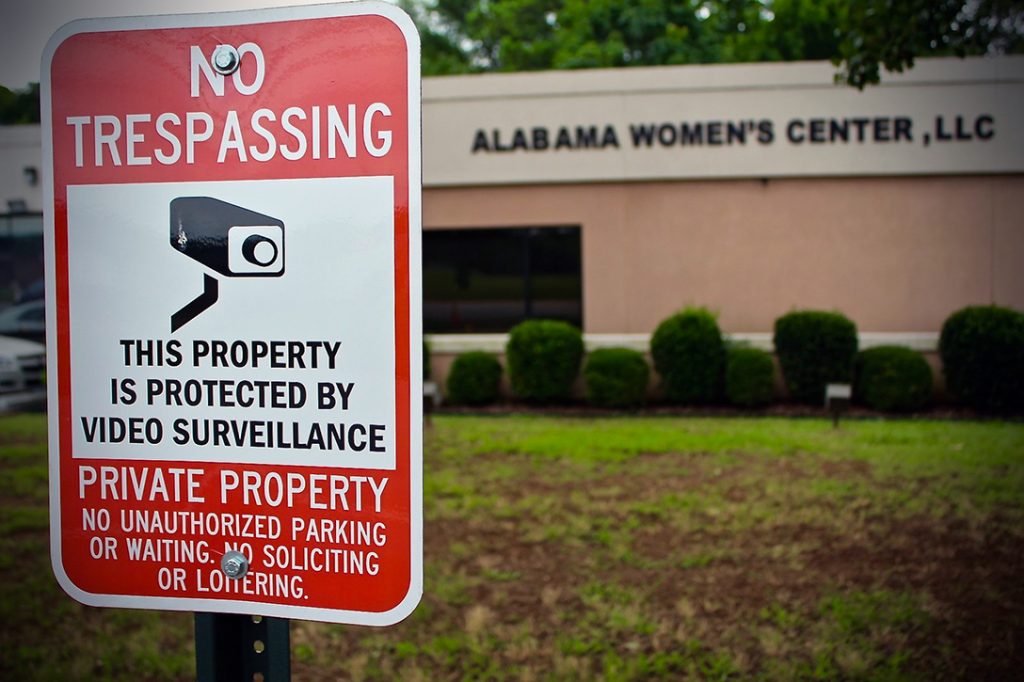
Sen. Elizabeth Warren (MA) called the bill “exceptionally cruel” and then released her abortion platform, which would call on Congress to pass legislation aimed at guaranteeing abortion and other reproductive rights around the country. She also tweeted that these issues go deeper than just Roe, writing, “We must go beyond abortion to ensure access to contraception, STI prevention & care, sex ed, care for pregnant moms, safe home & work environments, good wages, & more.”
Abortion providers also have no plans to back down. But Chiz, of the Allentown Women’s Center, said that though they have seen more protesters since the 2016 election, they have also had a huge increase in volunteers.
“What’s really wonderful is that we also had an increase in our volunteer applications and in fact employment applications as well,” she said. “So although it certainly inflamed the people who oppose what we do, it also motivated our supporters as well.”
Related front page panorama photo credit: Adapted by WhoWhatWhy from voltamax / Pixabay (CC0)
